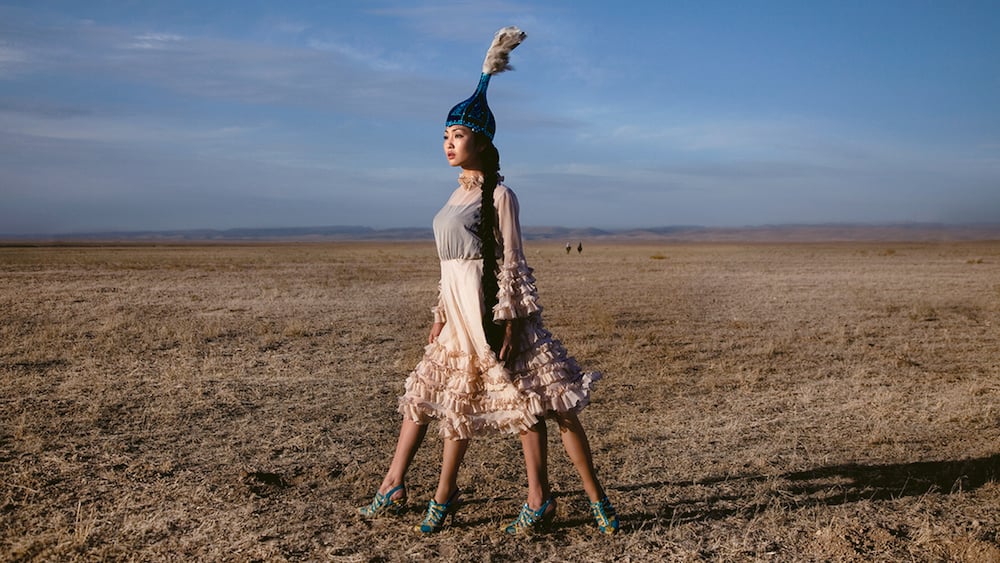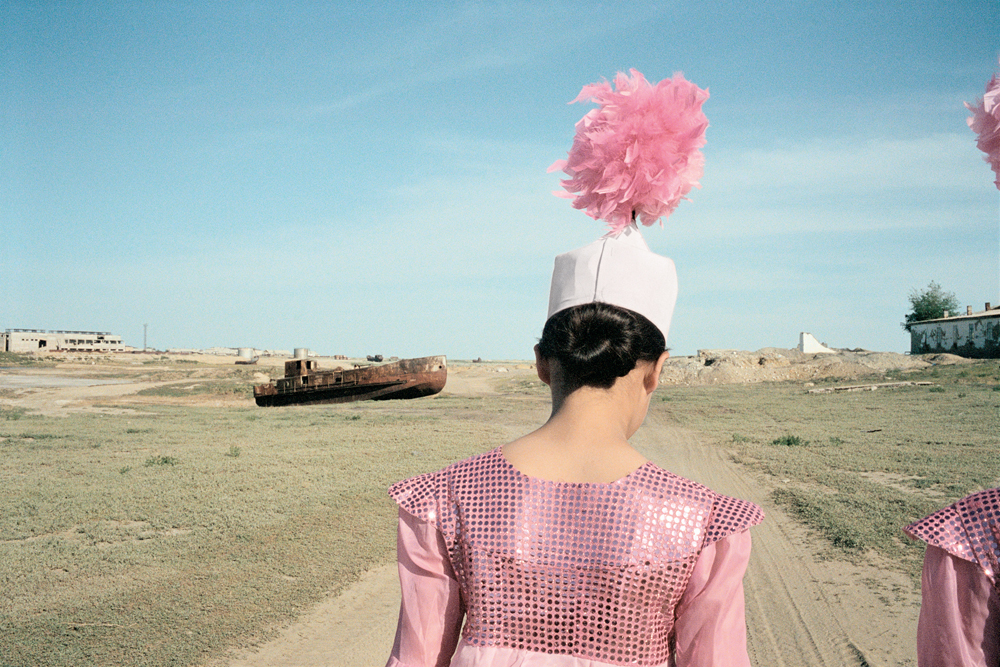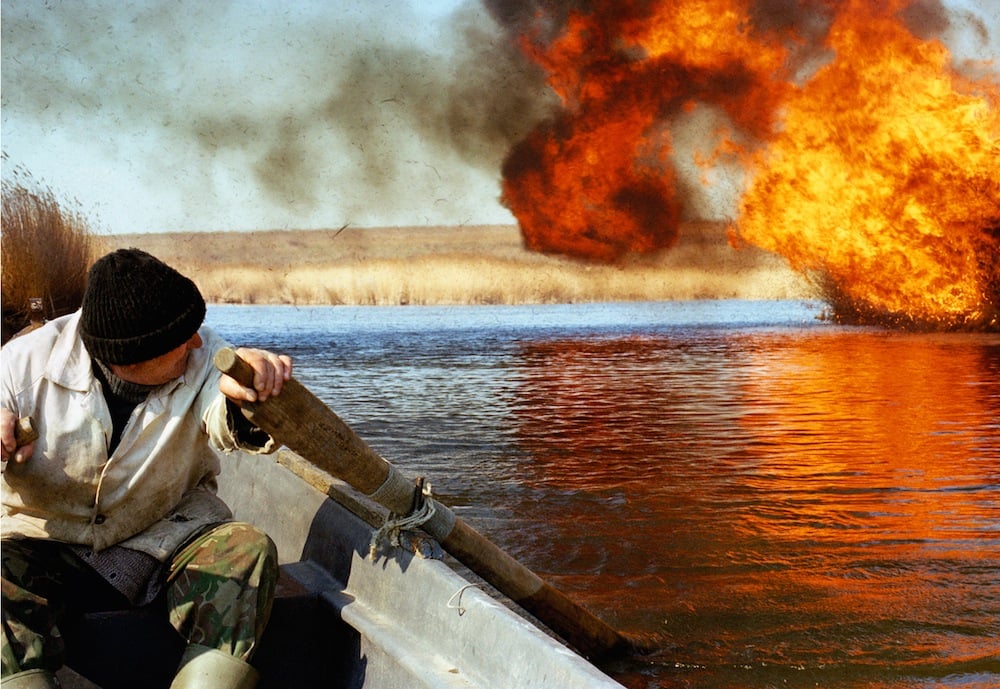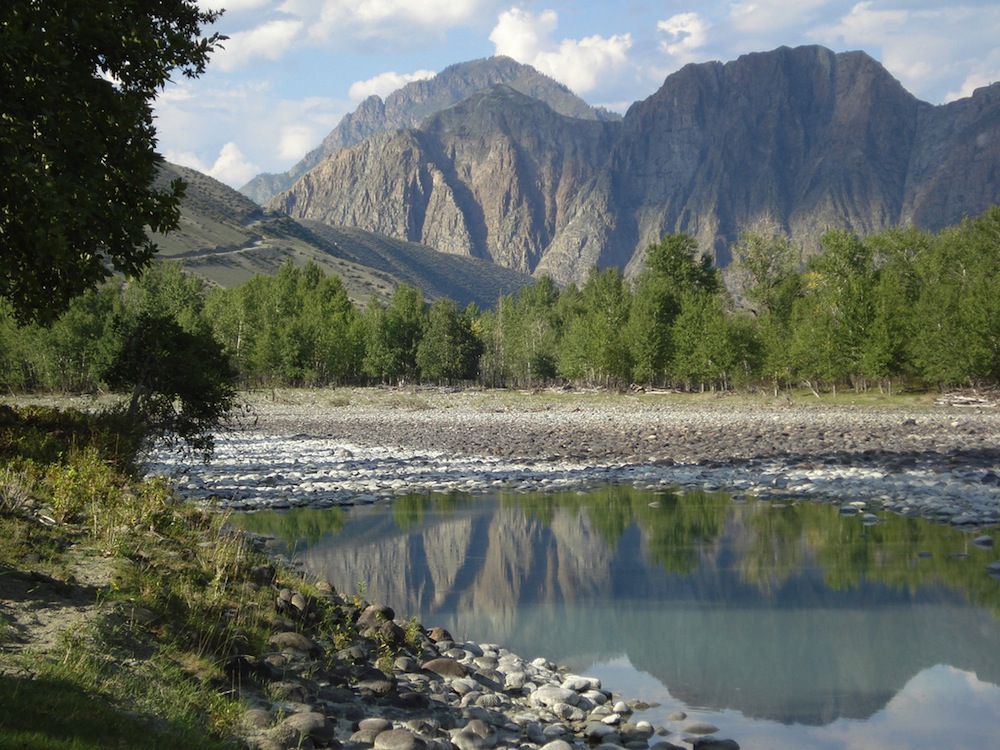Rich tapestry: highlights of Central Asian contemporary art revisited

As contemporary art from Central Asia starts to achieve global recognition, we look back at some of the highlights of Calvert 22's pioneering 2011 exhibition Between Heaven and Earth
Over the last decade Central Asian art’s place in the landscape of contemporary art has become increasingly more visible, finding a place at the Venice Biennale and being represented at the 2014 Art Dubai fair. In 2011, Calvert 22 staged Between Heaven and Earth: Contemporary Art from Central Asia. Curated by David Elliott, the exhibition contributed to a growing interest in the region and its cultural output. As Elliott discusses his experience of putting together the show on 3 December at London’s Dash Arts, we look back at some of its most memorable works.
Erbossyn Meldibekov
Erbossyn Meldibekov’s work plays with stereotypes that surround Central Asia and turns them into preposterous images. His Plates (2009) series takes the form of ceramics, objects for which Central Asia is famous around the world, embellished with deliberately vague images that are superficially associated with the region. Hailing from Kazakhstan, Meldibekov’s plates are adorned with images of camels, rudimentary technology, weapons and vast desert lands — referring not to specific countries but to a vast undifferentiated region. As the clichés pile up, the more absurd this image of Central Asia becomes. We may be none the wiser about what it is like from Meldibekov’s work, but we can see how poor our common understanding of it currently is.
His Alien (2008) dwells on stereotypes more generally, moving between careful depiction and caricature. The camera appears to capture a close-up portrait of a man — the artist himself — in a truthful manner and simple outfit, yet the profile pose adds a surreal detail of an extra pair of protruding teeth. While the work’s title might frame the image in terms of the 1979 film of the same name, the associations of the word “alien” with the foreign and unfamiliar are equally unavoidable. Meldibekov makes over his own image as one imagined through a lens of ignorance and misinformation.
Almagul Menlibayeva
Another Kazakh, Almagul Menlibayeva’s visually captivating photography and video work is rooted in her revival of what she calls the “nomadic shamanesque”: the pre-Soviet, pre-Islamic nomadic culture of Central Asia. That Menlibayeva’s dreamlike scenes are filled with strong images of women — sometimes nude, sometimes clothed in richly coloured buta (paisley-like) patterns — is unavoidable. Brandishing weapons in the light of the setting sun, Menlibayeva’s Bodyguards of Yassavi (2010) sits and stands among roses in elaborate costumes and exaggerated headwear.
The artist’s willing evocation of “traditional” elements of Kazakh culture in costume, landscape and ritual is but one answer to the question of where authentic Kazakh post-Soviet national and cultural identity may be found and what it might look like. Menlibayeva’s answer at times, such as in Steppen Baroque, seems entirely rooted in myth and history, but the artist’s most recent piece Transoxiana Dreams (2011) fuses her fantastical imagery with the region’s post-Soviet legacy. Filmed in the newly formed desert of the Aral Sea, disappearing due to Soviet irrigation projects, the 23-minute video piece is filled with female centaurs and semi-nude figures in Soviet uniform among disused and rusted fishing boats and desolate lands that had, until the 1960s, been water.
Said Atabekov
Although Said Atabekov, also from Kazakhstan, works across video, photography and installation he is perhaps best known for his use of textiles. In the 2011 show Between Heaven and Earth Atabekov exhibited a set of kaftans from the series United States Marines in Central Asia (2008). The piece is made up of a set of two patterns — one side harks back to more traditional buta motifs, while the other side refers to the region’s modern military history. More specifically, as the title states, it is the presence of US Marines in Central Asia in the 1990s. While operating in Afghanistan, the US Marines used Uzbekistan and Kyrgyzstan as their military base.
Like the two sides of the reversible kaftans, the deep-rooted traditions and the modern history of the region, the local and the international appear inseparable. The contact Central Asian states had with the outside world after post-Soviet independence that Atabekov points to in the work is, of course, also reinforced by the piece’s subsequent career. Shown across Europe and seen by international audiences far from its place of origin, the work is itself caught between Central Asian and international cultures.
Rustam Khalfin
The work of Rustam Khalfin, an artist of an older generation credited with helping to establish a contemporary art scene in Kazakhstan, looks not to western stereotypes but those from further east. In Northern Barbarians Part II: Love Races (2000), the artist, who was born in Uzbekistan, explores Kazakh identity as seen through the eyes of another of its neighbours: China. Khalfin’s piece brings to life another belief about “northern barbarians” — the Chinese name given to nomadic tribes beyond the Great Wall — proliferated, we are told, by Chinese 18th- and 19th-century erotic drawings.
The drawings from which the artist takes inspiration are — frustratingly or perhaps even intentionally — untraceable, but we can gauge from the piece that they imagined these nomadic tribes as so inseparable from their horses that even intercourse took place on horseback. The texture of what we are dealing with here is that of a rumour and in having rumour come to life in an unfeasible image, Khalfin’s piece serves to undermine the spurious notions masquerading as fact.
Ulan Djaparov
Those who have taken a sleeper train, such as the Trans-Siberian Express, will be familiar with its long, narrow corridors. Ulan Djaparov, from Kyrgyzstan, uses this setting for Train Art (2003-2005), in which the train carriage corridor, its pull-down seats and its handrails become the tools for a diversity of religious practices. We see a man use the patterned rug that covers the length of the corridor as a prayer mat, the pull-down seats accommodate a row of men meditating in a lotus position and the handrails that usually serve to steady passengers moving along the length of the carriage become the setting for a scene of a crucifixion. The cramped corridors of the train bring the practices of Islam, Buddhism and Christianity together into one confined setting as the train traverses the vast terrain across Europe and Asia. With it Djaparov highlights the ethnic and religious intermingling of a region that is characterised by an often too neatly outlined set of traits.
Viktor Vorobyev and Yelena Vorobyeva



